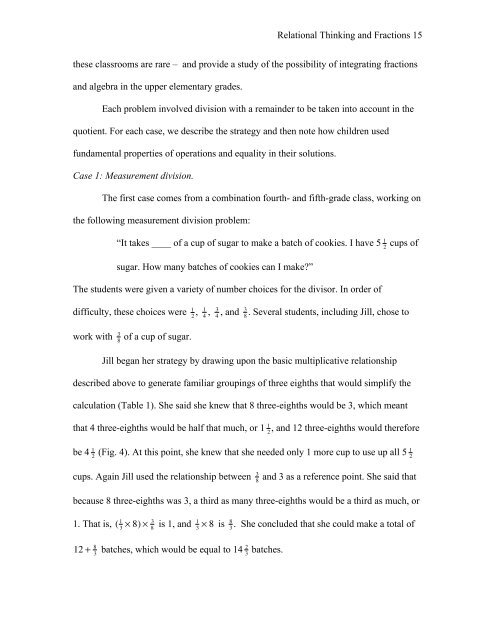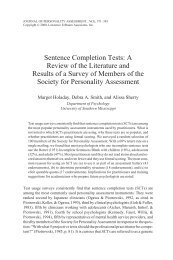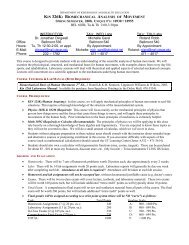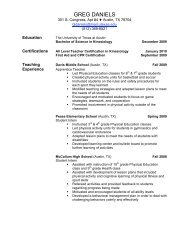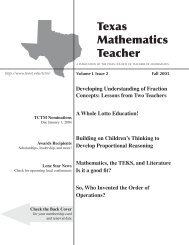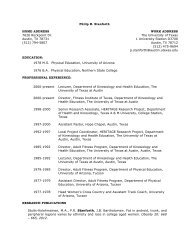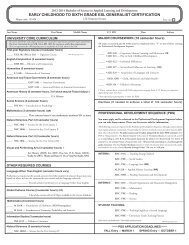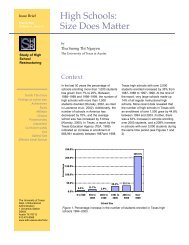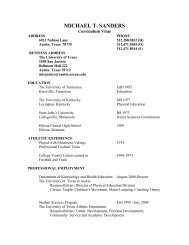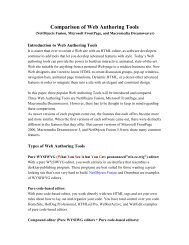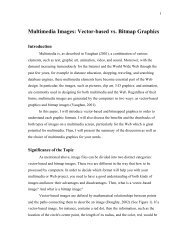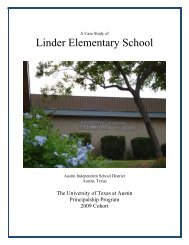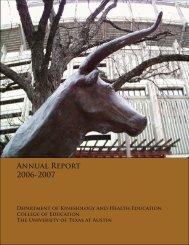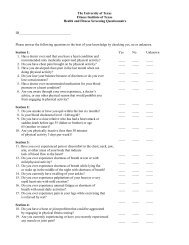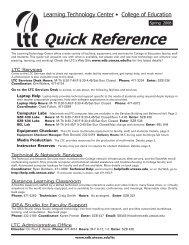The Algebraic Nature of Fractions: Developing Relational Thinking ...
The Algebraic Nature of Fractions: Developing Relational Thinking ...
The Algebraic Nature of Fractions: Developing Relational Thinking ...
You also want an ePaper? Increase the reach of your titles
YUMPU automatically turns print PDFs into web optimized ePapers that Google loves.
<strong>Relational</strong> <strong>Thinking</strong> and <strong>Fractions</strong> 15<br />
these classrooms are rare – and provide a study <strong>of</strong> the possibility <strong>of</strong> integrating fractions<br />
and algebra in the upper elementary grades.<br />
Each problem involved division with a remainder to be taken into account in the<br />
quotient. For each case, we describe the strategy and then note how children used<br />
fundamental properties <strong>of</strong> operations and equality in their solutions.<br />
Case 1: Measurement division.<br />
<strong>The</strong> first case comes from a combination fourth- and fifth-grade class, working on<br />
the following measurement division problem:<br />
“It takes ____ <strong>of</strong> a cup <strong>of</strong> sugar to make a batch <strong>of</strong> cookies. I have 5<br />
sugar. How many batches <strong>of</strong> cookies can I make?”<br />
<strong>The</strong> students were given a variety <strong>of</strong> number choices for the divisor. In order <strong>of</strong><br />
difficulty, these choices were<br />
work with<br />
3<br />
8 <strong>of</strong> a cup <strong>of</strong> sugar.<br />
1<br />
2 ,<br />
1<br />
4 ,<br />
3<br />
4 , and<br />
1<br />
2<br />
cups <strong>of</strong><br />
3<br />
8 . Several students, including Jill, chose to<br />
Jill began her strategy by drawing upon the basic multiplicative relationship<br />
described above to generate familiar groupings <strong>of</strong> three eighths that would simplify the<br />
calculation (Table 1). She said she knew that 8 three-eighths would be 3, which meant<br />
that 4 three-eighths would be half that much, or 1<br />
be 4<br />
1 , and 12 three-eighths would therefore<br />
2<br />
1<br />
1<br />
(Fig. 4). At this point, she knew that she needed only 1 more cup to use up all 5<br />
2 2<br />
cups. Again Jill used the relationship between<br />
3<br />
8<br />
and 3 as a reference point. She said that<br />
because 8 three-eighths was 3, a third as many three-eighths would be a third as much, or<br />
1. That is, ( 1<br />
3<br />
3 × 8) × 8<br />
12 + 8<br />
3<br />
1 is 1, and 3 × 8 is<br />
batches, which would be equal to 14<br />
8<br />
3 . She concluded that she could make a total <strong>of</strong><br />
2<br />
3 batches.


